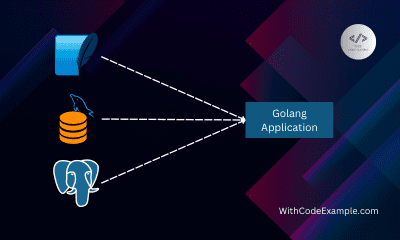Transactions and Error Handling with GORM
- With Code Example
- September 3, 2023

Series - GORM
- 1: GORM: Effortless Database Management in Go
- 2: Defining Models in GORM
- 3: A Guide to CRUD Operations with GORM
- 4: Advanced Querying with GORM
- 5: A Guide to Migrations in GORM
- 6: Transactions and Error Handling with GORM
- 7: Hooks and Callbacks in GORM
- 8: Concurrency and Goroutines in GORM
- 9: Learn Pagination and Sorting in GORM
- 10: Seamlessly Integrating GORM with Go Web Frameworks

In the world of database management, ensuring data integrity is paramount. GORM, the robust Go Object-Relational Mapping library, empowers developers with essential tools for maintaining data consistency and handling errors gracefully. This article serves as your comprehensive guide to mastering transactions and error handling with GORM. We’ll delve into working with transactions to guarantee atomicity, and explore strategies for effectively handling errors and rollbacks to keep your database operations reliable and robust in your Go projects.
Working with Transactions in GORM
Transactions play a crucial role in ensuring data consistency and integrity. GORM’s transaction support empowers you to perform multiple database operations as a single unit of work.
Step 1: Begin a Transaction
Use GORM’s Begin method to start a transaction:
tx := db.Begin()
Step 2: Execute Operations
Perform your database operations within the transaction:
if err := tx.Create(&User{Name: "Alice"}).Error; err != nil {
tx.Rollback()
return err
}
Step 3: Commit or Rollback
After executing operations, choose to either commit or rollback the transaction:
if err := tx.Commit().Error; err != nil {
tx.Rollback()
return err
}
Handling Errors and Rollbacks in GORM
Graceful error handling and rollbacks are essential to maintain data consistency and integrity in case of failures.
Step 1: Handle Errors
Check for errors and handle them appropriately:
if err := tx.Create(&User{Name: "Bob"}).Error; err != nil {
// Handle error
}
Step 2: Perform Rollback
In the case of an error, roll back the transaction to ensure data integrity:
if err := tx.Commit().Error; err != nil {
tx.Rollback()
return err
}
Nested Transactions in GORM
GORM supports nested transactions, allowing you to encapsulate specific operations within their own transaction boundaries.
outer := db.Begin()
// Perform operations in the outer transaction
inner := outer.Begin()
// Perform operations in the inner transaction
if err := inner.Commit().Error; err != nil {
inner.Rollback()
outer.Rollback()
return err
}
if err := outer.Commit().Error; err != nil {
outer.Rollback()
return err
}
Conclusion
Transactions and error handling are the cornerstones of reliable database operations. With GORM’s powerful transaction support and error handling techniques, you’re equipped to ensure data integrity and maintain a consistent state in your Go applications. By mastering the art of working with transactions, gracefully handling errors, and understanding the importance of rollbacks, you’ve gained the skills to navigate complex scenarios and handle failures with confidence. As you apply the insights and examples from this guide, remember that with GORM by your side, your application’s data integrity is not just a goal but a certainty.

Related Posts

Chapter 2: Setting Up the Environment for GIN Framework
Embarking on a journey in web development often starts with choosing the right tools for the job. In this comprehensive guide, we’ll walk you through the process of installing Go programming language and Gin Framework, a lightweight and flexible web framework for Go.





